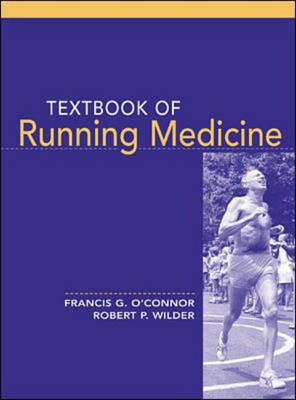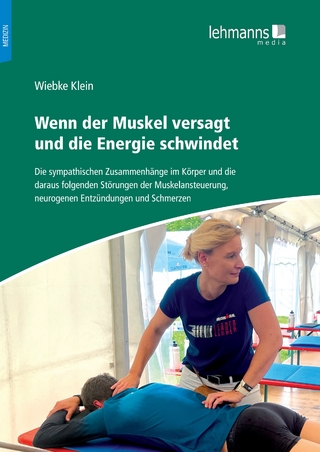
Textbook of Running Medicine
McGraw-Hill Inc.,US (Verlag)
978-0-07-135977-1 (ISBN)
- Titel ist leider vergriffen;
keine Neuauflage - Artikel merken
With approximately 30 million runners in the US alone, running injuries are among the most common problems seen by physicians. The only diagnostic and treatment information heretofore has been available to physicians, but has come from general sports medicine or orthopaedics manuals. In this textbook, doctors O'Conner and Wilder propose effective management regimens in the treatment of all forms of running injuries. They focus on clinical management with an approach that details common features, diagnosis, and treatment of running injuries; associated medical problems; problems unique to specific classes of runners; rehabiliation guidelines; and major surgical considerations.
Francis O'Connor, M.D., is a member of the Department of Family Medicine at the Uniformed Services University of the Health Sciences in Bethesda, MD. Robert Wilder, M.D., is Director of Sports Rehabilitation Services, the Runner's Injury Clinic, and Clinical Instructor in the Department of Physical Medicine and Rehabilitation, all at Baylor University Medical Center in Dallas, TX.
Part I: General Considerations. Chapter 1: Epidemiology of Running Injuries. Chapter 2: Biomechanics Running. Chapter 3: Principles of Training. Chapter 4: Tendinosis and Tendon Injury. Part II: Evaluation of the Runner. Chapter 5: Evaluation of the Injured Runner. Chapter 6: Video Gait Analysis. Chapter 7: Diagnostic Imaging of Running Injuries. Chapter 8: Electrodiagnostic Testing. Chapter 9: Compartment Syndrome. Chapter 10: Exercise-Induced Asthma Testing. Chapter 11: Testing for Maximal Aerobic Power. Part III: Common Running Injuries. Chapter 12: The Spine. Chapter 13: Hip and Pelvis Injuries. Chapter 14: The Knee. Chapter 15: Patellofemoral Pain Syndrome. Chapter 16: Exertional Leg Pain. Chapter 17: Ankle Injuries. Chapter 18: Foot Injuries in the Runner. Chapter 19: Stress Fractures. Chapter 20: Nerve Entrapments. Part IV: Medical Problems. Chapter 21: Dermatological Disorders. Chapter 22: Exercise-Induced Bronchospasm. Chapter 23: Evaluation and Management of Headache for Runners. Chapter 24: Gastrointestinal Problems in Runners. Chapter 25: Genitourinary Disorders. Chapter 26: Hematologic Concerns. Chapter 27: Cardiovascular Considerations in the Runner. Chapter 28: Infectious Disease. Chapter 29: The Runner with Diabetes. Chapter 30: Running and Osteoarthritis. Chapter 31: Overtraining. Chapter 32: Environmental Injuries. Part V: Special Considerations. Chapter 33: Special Considerations for the Pediatric Running Population. Chapter 34: The Female Runner. Chapter 35: The Geriatric Runner. Chapter 36: The Disabled Runner. Chapter 37: The Ultramarathoner. Chapter 38: Nutritional Considerations. Chapter 39: Distance Running: Organization of the Medical Team. Part VI: Rehabilitation. Chapter 40: Basic Treatment Concepts. Chapter 41: Medications and Ergogenic Aids. Chapter 42: Physical Agents. Chapter 43: Massage and Manual Medicine. Chapter 44: Therapeutic Exercise. Chapter 45: Aqua Running. Chapter 46: The Running Shoe. Chapter 47: Foot Orthotics. Chapter 48: Principles of Strength Training. Chapter 49: Psychology and the Injured Runner: Recovery-Enhancing Strategies. Part VII: Surgical Considerations in the Runner. Chapter 50: Overview: Surgical Considerations in the Runner. Chapter 51: Hip/Pelvis. Chapter 52: Surgical Treatment of Knee Disorders in Runners. Chapter 53: The Leg. Chapter 54: Surgical Considerations of Ankle Injuries. Chapter 55: The Foot. Appendix: ACSM Position Stands and Current Comments.
| Erscheint lt. Verlag | 16.7.2001 |
|---|---|
| Zusatzinfo | 150 illustrations, 1 colour illustration, photographs |
| Verlagsort | New York |
| Sprache | englisch |
| Maße | 211 x 282 mm |
| Gewicht | 1936 g |
| Themenwelt | Medizin / Pharmazie ► Medizinische Fachgebiete ► Sportmedizin |
| Medizin / Pharmazie ► Physiotherapie / Ergotherapie ► Rehabilitation | |
| ISBN-10 | 0-07-135977-X / 007135977X |
| ISBN-13 | 978-0-07-135977-1 / 9780071359771 |
| Zustand | Neuware |
| Haben Sie eine Frage zum Produkt? |
aus dem Bereich


